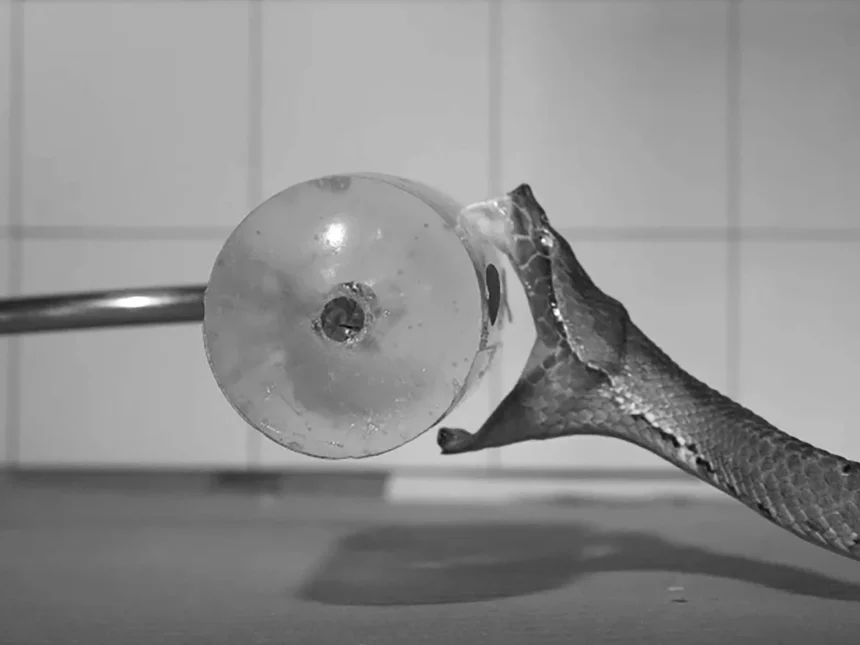Venomous Snakes Strike in Record Time
Venomous snakes strike with astonishing speed, sinking their fangs into prey in as little as 60 milliseconds. This rapid attack is essential to prevent prey from escaping, especially when hunting small rodents.
Recent research has captured high-speed footage of 36 venomous snake species striking objects that mimic human skin and muscle, filmed at 1,000 frames per second, providing unprecedented insight into their hunting mechanics.

Vipers: Precision and Fang Movement
Viper species, such as the sharp-nosed pit viper (Deinagkistrodon acutus), strike within 100 milliseconds, walking their fangs forward to achieve the perfect angle before injecting venom.
“When vipers strike, they can unfold their fangs at just the right moment,” explains Prof. Alistair Evans.
This precise fang deployment ensures maximum venom delivery while minimizing the risk of injury to the snake.
Elapids: Repeated Bites for Effective Venom Delivery
Elapid snakes, including species like the rough-scaled death adder (Acanthophis rugosus) and Cape coral snake (Aspidelaps lubricus), often sneak up on their prey and strike multiple times.
Elapids have permanently erect fangs, which are shorter than vipers’. Multiple strikes help contract the muscles around their venom glands, delivering venom efficiently over several bites. This family also includes cobras, mambas, and taipans, known for their rapid and lethal strikes.https://www.youtube.com/watch?v=JLJt6z6Q5aE

Colubrids: Rear Fangs and Jaw Rotation
Colubrids, such as the mangrove snake (Boiga dendrophila), have fangs located toward the back of their mouths. To inject venom, they must open their jaws wider and saw or rotate their jaws, cutting into the prey to maximize venom penetration.
This strategy allows colubrids to deliver venom effectively despite their less specialized fang structure.
Fang Loss During Feeding
High-speed observations revealed that snakes occasionally lose fangs when striking too quickly. For example, a blunt-nosed viper (Macrovipera lebetina) was observed losing a fang when it reached its prey too fast.
“Fang loss is common and not dangerous, as snakes continuously replace fangs throughout their lives,” Prof. Evans notes.
Previous studies have also found fangs in snake droppings, showing that broken fangs are swallowed and replaced naturally.

Implications for Conservation and Research
Understanding how venomous snakes strike is crucial for conservation. By knowing their diet, hunting techniques, and behavior, researchers can develop more effective protection strategies for these species.
Dr. Silke Cleuren, lead researcher, and her team at Venomworld in Paris emphasize that slow-motion footage fills knowledge gaps in snake behavior.
Dr. Alessandro Palci of Flinders University adds:
“Strike behavior correlates closely with fang anatomy, confirming differences between viperids, elapids, and colubrids.”
Conclusion
Venomous snakes strike with remarkable precision and adaptability. From vipers’ unfolding fangs to elapids’ repeated bites and colubrids’ jaw rotation, these strategies ensure survival and effective venom delivery. High-speed studies of their hunting provide not only fascinating insights but also critical data for conservation and species protection.




